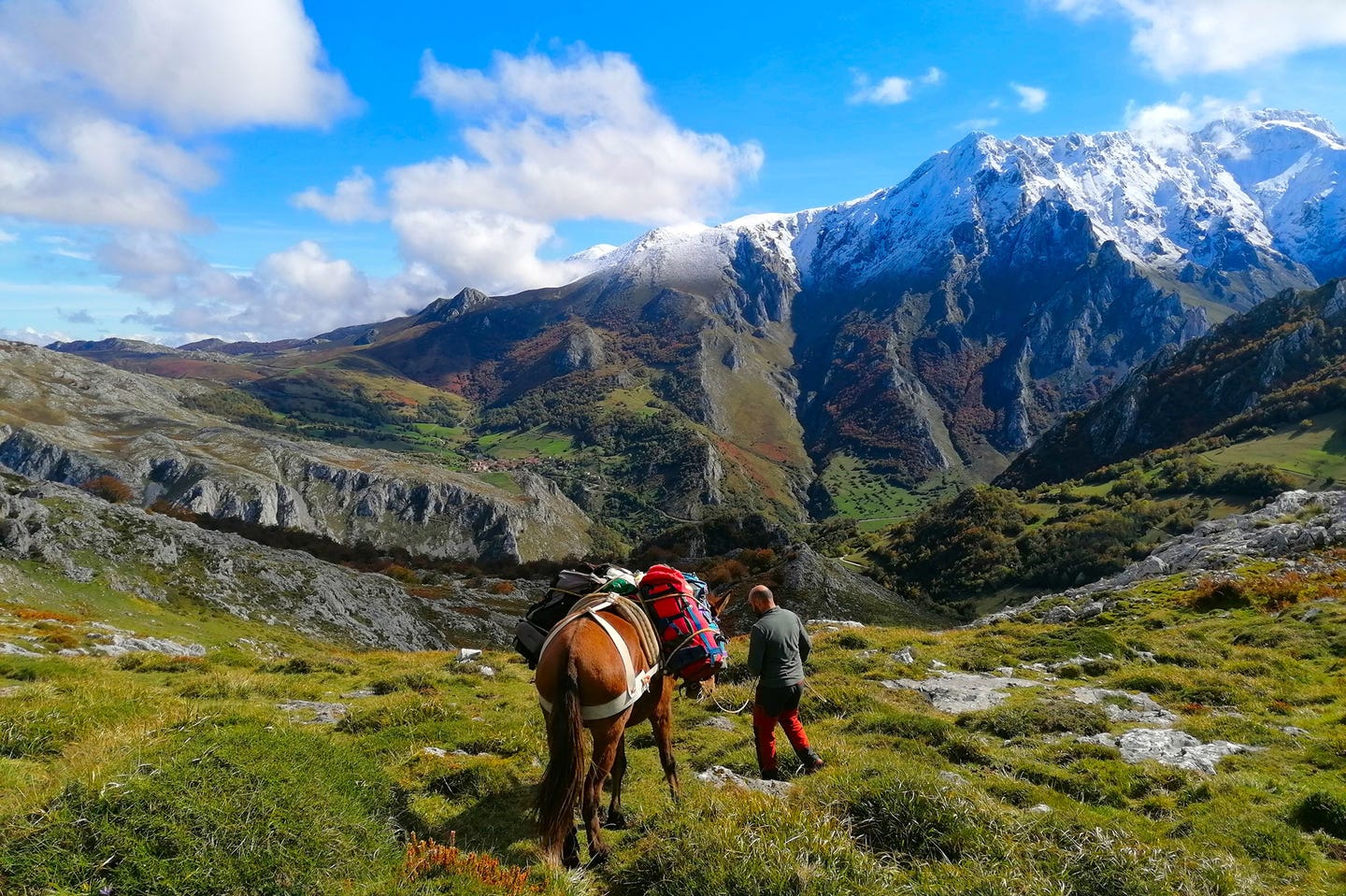
The World’s Most Valuable Cheese Is at Risk of Fading into History
A funky enigma in Spain’s rugged Asturias mountains.
A 4.5-pound block of Cabrales from Asturias, Spain currently holds the Guinness World Record for most expensive cheese ever sold at auction. The massive piece commanded 20,500 euros ($23,000 USD) in 2019. That’s a lot of expectation riding on a humble wheel of cheese, but it pales in comparison to the pressure and hope being placed on this product today—to conserve a unique landscape and a traditional way of life that is rapidly disappearing.
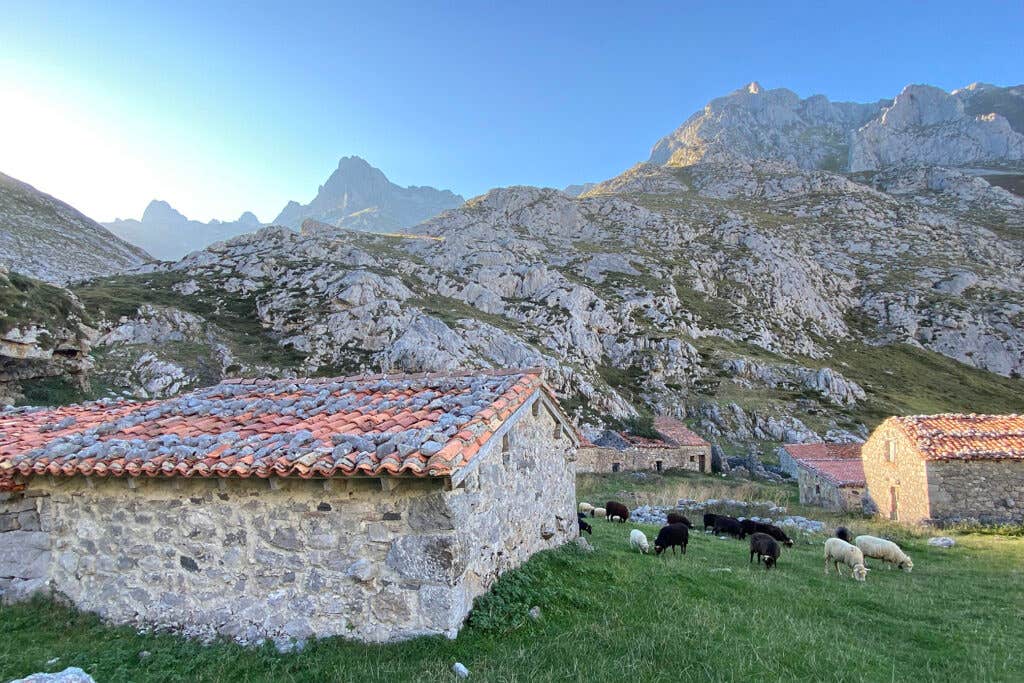
For cheese producers to earn the Denomination of Protected Origin (DOP, the Spanish acronym) seal that identifies a blue cheese as authentic Cabrales, they must start with raw milk from animals that have pastured in Asturias' portion of the stunning Picos de Europa National Park, an otherworldly biosphere reserve ringed by a natural skyline of limestone cliffs. These days, most producers use 100 percent cow’s milk, but sheep and goat’s milk are also allowed. According to the Consejo Regulador, the regulatory body that sets the DOP rules, the cheese must age in the park’s caves, buried deep in the mountains, where the consistent temperature, humidity, and ambient penicillium mold work their magic, producing a characteristically sharp and pungent flavor that balances the intense richness. These caves are so valuable that they are kept under lock and key, passed down from generation to generation like family heirlooms.
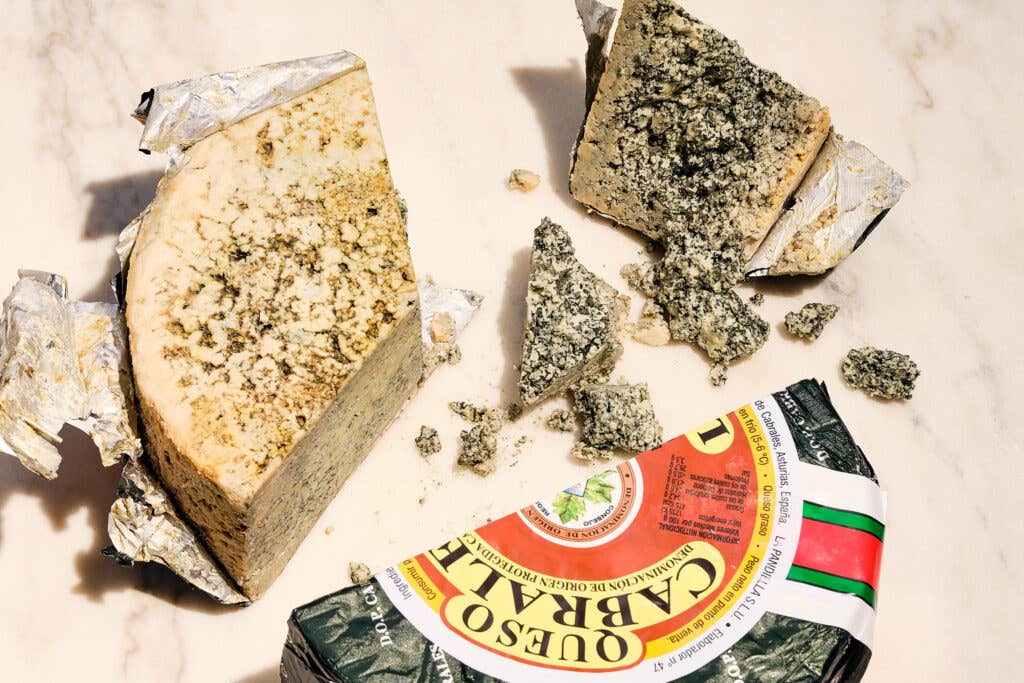
During a trip to Spain last fall, I visited the picturesque hamlet of Sotres, the highest-altitude village within Asturias’ portion of the park. While there, I met Jessica López, 39, co-owner of the award-winning Quesería Maín, the cheesemaking operation she runs with her husband, Javier Díaz.
A native of Sotres, López lived there until the age of four, when the coal mine where her father worked closed down and he was transferred to another mine 50 miles east. The family relocated to the city of Torrelavega, where López stayed through college while studying graphic design, but she went back to visit her hometown whenever she could. “I loved returning to see my grandmother,” she says. “I’d come back here most weekends and vacations.” After López graduated, she and her husband moved to Oviedo, Asturias’ capital, so that she could give the design industry a shot. The pull of Sotres, however, was too strong; they returned to the village one year later.
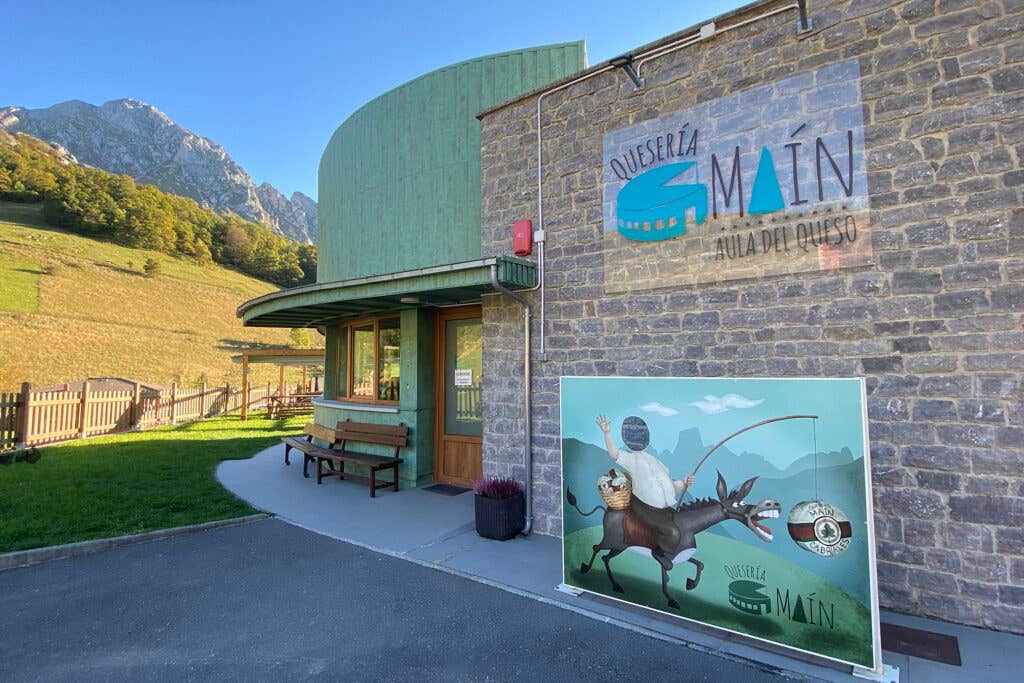
Like López, her husband also comes from a long line of cheesemakers. Before the two moved to the capital, Díaz had been working as a shepherd, raising goats, sheep, and cows in Sotres. Together, they opened Quesería Maín in 2007, renting a temporary space until they were able to build their current facility. Cylindrical in shape, the building was designed to resemble a wheel of Cabrales, with the exterior painted the signature cardenillo (blue-green) hue of the mold that streaks the inside of this variety.
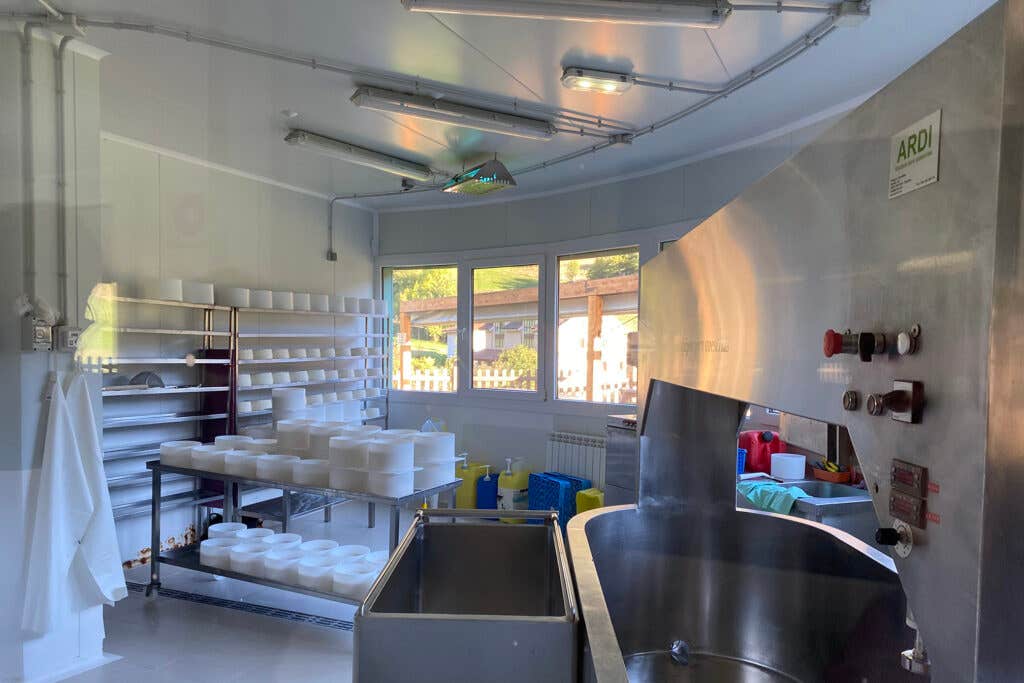
During my visit, López walked me through the cheese-making process, which begins with the raw milk they buy from a relative of Díaz’s who raises cattle in the nearby town of Tielve. (The couple also has their own herd of goats whose milk is the basis for a separate cheese; their Cabrales is 100 percent cow’s milk.) After curdling the milk and straining the whey, they place the curds into molds and let them rest for two days, flipping the cheeses after the 24-hour mark. Next, they remove the curds from the molds, salt them, and allow them to rest for two more days, again flipping them after the first 24 hours. At this point, the wheels are transferred to the drying room where they remain for 15 to 20 days, until their final relocation to one of the four aging caves.
The choice of cave determines the quality of the cheese that results. While all four caves have a consistent humidity level of 95 to 98 percent, the air temperature is different in each. Two, which are accessible by car and a short hike, are used to make Quesería Maín’s basic Cabrales, which ages for about four months at a temperature of 50 to 52 degrees Fahrenheit. The other two, located at higher altitudes, are used to produce the Reserva, which matures for up to 10 months at a temperature between 43 to 46 degrees Fahrenheit. These two higher caves are only reachable on foot, so López and Díaz must load the cheeses into sacks and ferry them on horseback. If the snow is too deep, the couple leaves their horse at home and instead carries the cheeses on their own backs. “Sometimes in winter you spend three or four hours just to reach the caves,” she explains, “and another two to three hours to dig a tunnel through the snow before you can find the door.”
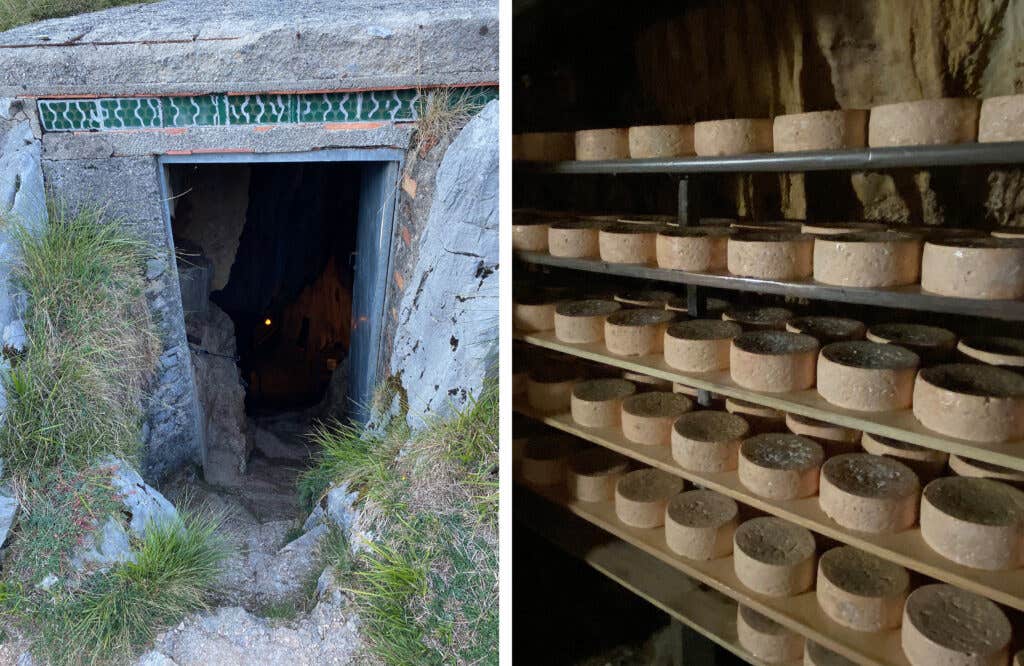
Even after the cheeses have been moved, the work continues. Every single wheel in all four caves must be washed and flipped once a week to prevent mold from forming a crust on the exterior, which would stop the fermentation process and result in spoilage. To determine when a cheese is finally ready to be sold, a long, thin knife is inserted deep into the interior; if it enters smoothly and the aroma is right, it has matured all the way through.
Like their caves, the couple’s expertise was also passed down to them from their ancestors, and the process remains largely the same as it was in their grandmothers’ time, although there have been some improvements. When López and I visited the most accessible of the caves, we descended to the subterranean aging area via a long, steep staircase, which was dangerously slippery from the ambient humidity. The “banisters” were bristly ropes strung through poles embedded in the steps. This staircase was added some years ago by her uncle, but back when López’s grandmother was using the cave, she made her way into and out of its depths by swinging down a rope and shimmying her way back up, toting the cheeses on her shoulder. “Those were all-terrain women,” says López. “Sometimes, I feel almost guilty when I complain. They had it so much tougher.
The stratospheric price tag the Guinness Record-holder Cabrales earned is not typical; that auction took place during a showy annual competition that attracted a bidder from as far away as Dubai. In the U.S., even the finest Cabrales sells for closer to $30/pound, a price that does not fully capture the effort that goes into each wheel. “It hurts a lot when people complain that it’s too expensive,” she says. “You don’t rest. It’s 365 days a year.”
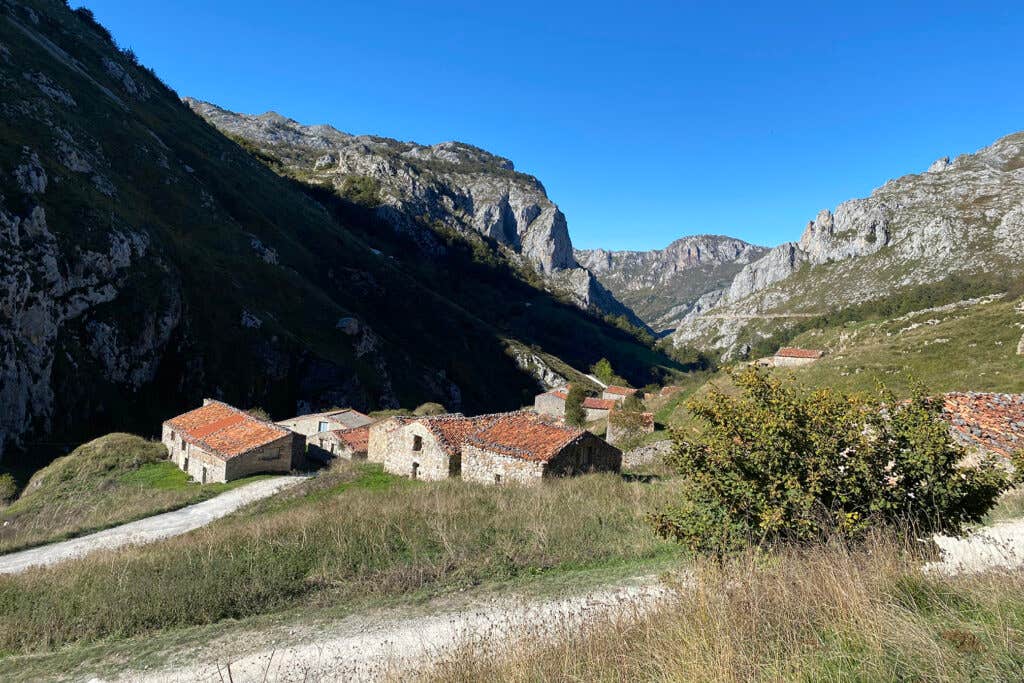
The relentless nature of the work partly explains why the number of producers has been steadily declining since the 1990s. While total annual production of Cabrales has stayed fairly constant, most of the current volume comes from larger operations. According to the Consejo, there were about 61 registered cheese-makers within the Denomination of Protected Origin area in the year 2000, but that number plummeted to 23 by 2021. “It’s the smaller cheese-makers that are disappearing—those producing fewer than 10,000 kilos per year,” says Isabel Marcos, the Consejo’s biologist.
At the same time, there are also far fewer young people working as shepherds in the Picos de Europa Park, which not only reduces the amount of raw milk available to cheese-makers but also affects the equilibrium of the ecosystem. “Shepherds have been active here for 10,000 years,” says Fernando Abarquero, who runs Pro Natura, a sustainable-tourism company. “The goats and sheep are able to climb the steepest slopes and chew through the toughest evergreen shrubs. They leave behind excellent pastures.” But with their numbers in decline, invasive plants like gorse, known locally as árguma, have been taking over.
Able to reach six feet in height, gorse grows densely and has sharp thorns. This makes large swaths of the park impassable to livestock, their human caretakers, and the wildlife that share the habitat, including wolves, which are being driven closer to neighboring villages in search of prey. “Without the goats and sheep to eat these weeds, a lot of routes are being closed off,” says López. “I have mastiffs, and even they won’t go into those areas.”
The proliferation of these bushes also increases fire risk. “As more of the park fills up with them, fires follow,” says Abarquero. And these blazes move fast, wiping out grazing areas and perpetuating the vicious cycle. “The way that my grandmother knew the park is not the way I knew it as a kid,” says López, “and in 50 years, it will be totally different than it is today.”
López is the last person on her mother’s side of the family who still makes Cabrales. “If young people don’t fight to preserve this way of life, these products will be lost, along with all of the history that’s behind them,” she says. “It's a way of recognizing the work that was done by our grandparents.”
Recipe
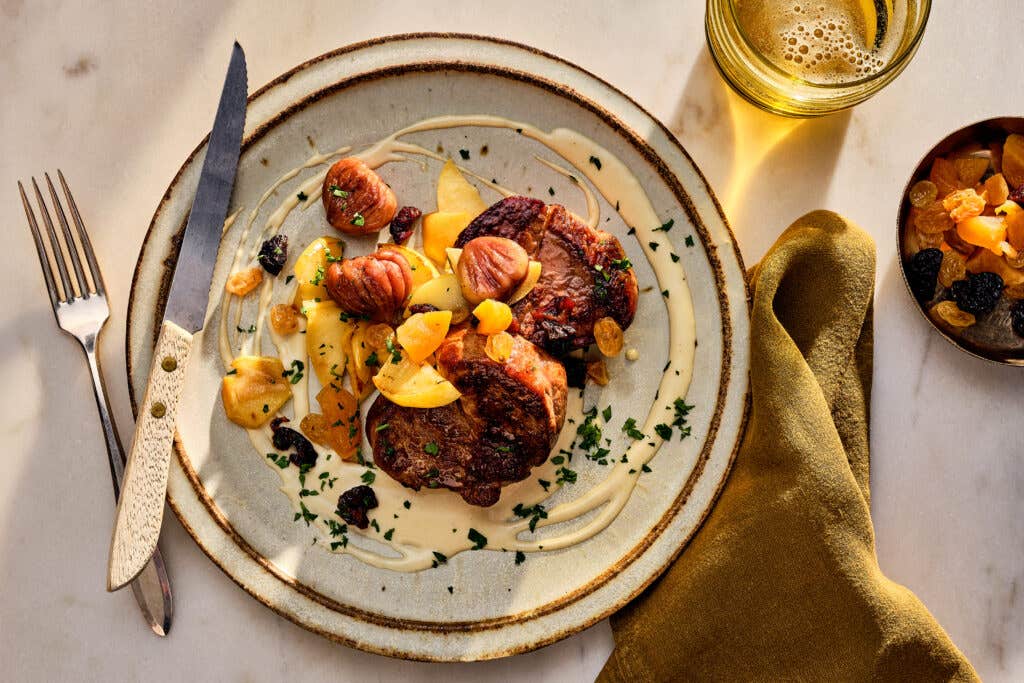
Keep Reading
Continue to Next Story










